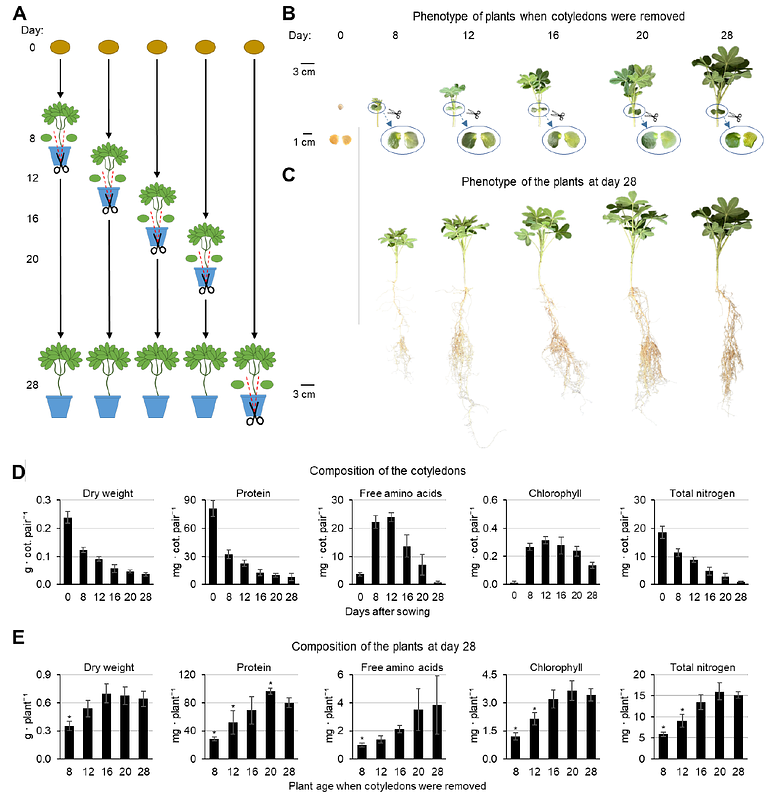Balancing nutrient remobilization and photosynthesis: the dual role of lupin cotyledons after germination

Balancing nutrient remobilization and photosynthesis: the dual role of lupin cotyledons after germination
Angermann, C.; Heinemann, B.; Bueno Nogueira, B.; Mai, H.-J.; Bauer, P.; Hildebrandt, T. M.
AbstractEfficient nutrient mobilization from seed storage tissues is essential for seedling establishment, particularly in legumes such as Lupinus albus (white lupin), which thrive in nutrient-poor soils. This study investigates the role of cotyledons in nitrogen (N) and mineral remobilization after germination during their transition from storage organs to photosynthetically active tissues including the metabolic challenges posed by coexistence of these two functions in epigeal germination. We cultivated white lupin seedlings under nitrogen-deficient conditions, analyzing cotyledon composition and function over 28 days. Our results indicate that 60 % of cotyledon-stored proteins are degraded within the first eight days, with free amino acids transiently accumulating before being redistributed to support growth. The progressive depletion of cotyledon reserves was accompanied by structural and metabolic changes, including an increase in photosynthetic proteins. However, cotyledon photosynthetic capacity remained lower than that of true leaves, suggesting a transient role in energy metabolism. The loss of cotyledons before day 12 significantly impaired seedling development, emphasizing their critical contribution to nitrogen, phosphate, and micronutrient supply during early growth. Comparative proteomic analysis revealed dynamic shifts in nutrient transport, amino acid metabolism, and stress response pathways following cotyledon removal. These findings underscore the significance of cotyledon nutrient remobilization in legume adaptation to low-fertility soils and highlight potential targets for breeding strategies aimed at improving nutrient use efficiency. By optimizing cotyledon nutrient composition and function, future breeding efforts could enhance seedling vigor, reduce fertilizer dependency, and improve the nutritional value of lupin-based foods.